April 2024
Reference
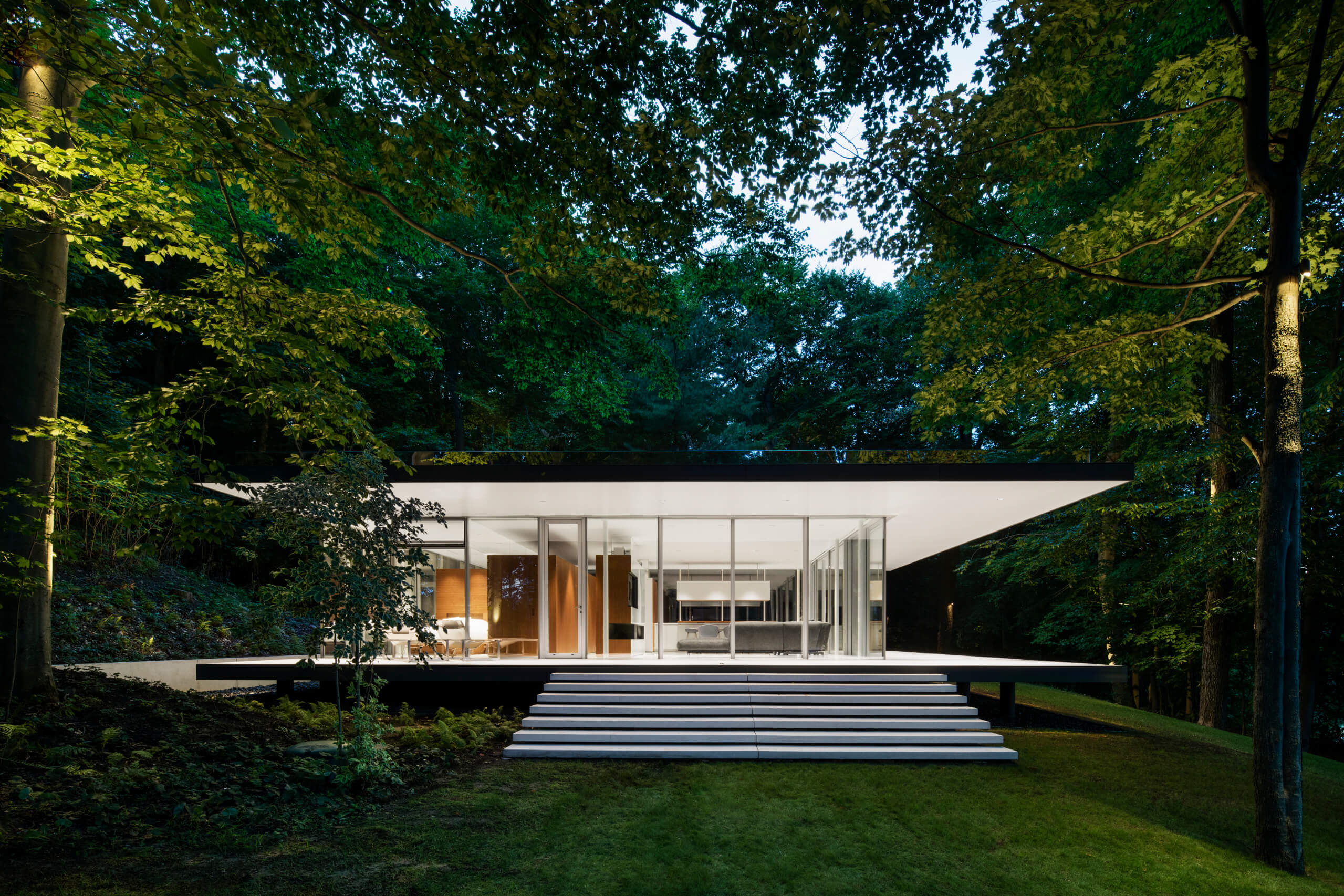
Set on a plot that slopes gently toward a lake, this pavilion is surrounded by the exceptional flora of an old growth forest. A guest house with two bedrooms, bathroom, kitchen and living area, the structure was built within narrow constraints: it was required to sit atop the footprint of an existing cabin, and to be integrated within the landscape while remaining under 115 m2.
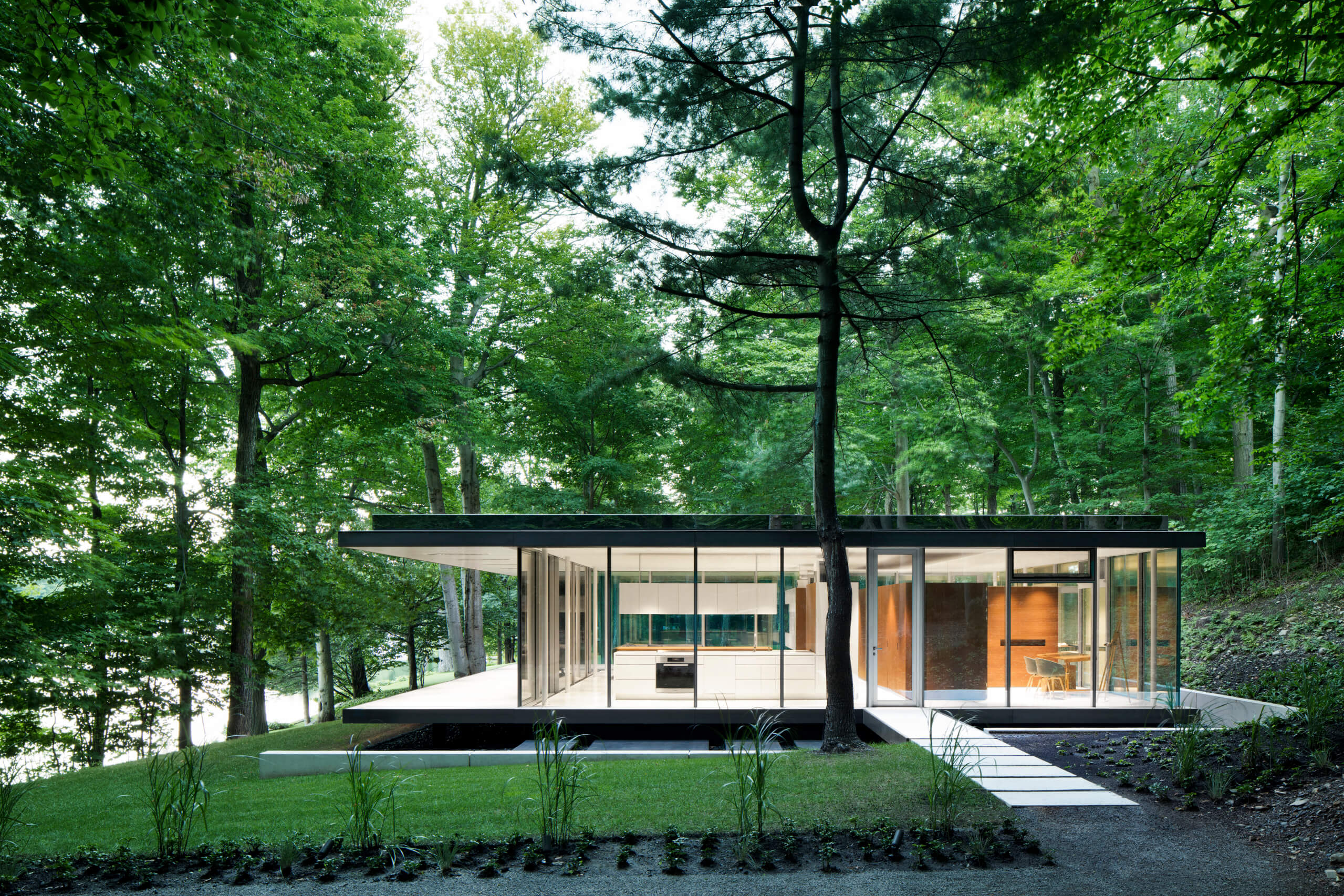
To meet these demands, the design created a transparent glass volume, with a vegetated roof that appears continuous with the land above, and a floating floor slab, elevated to tread lightly on the earth below.
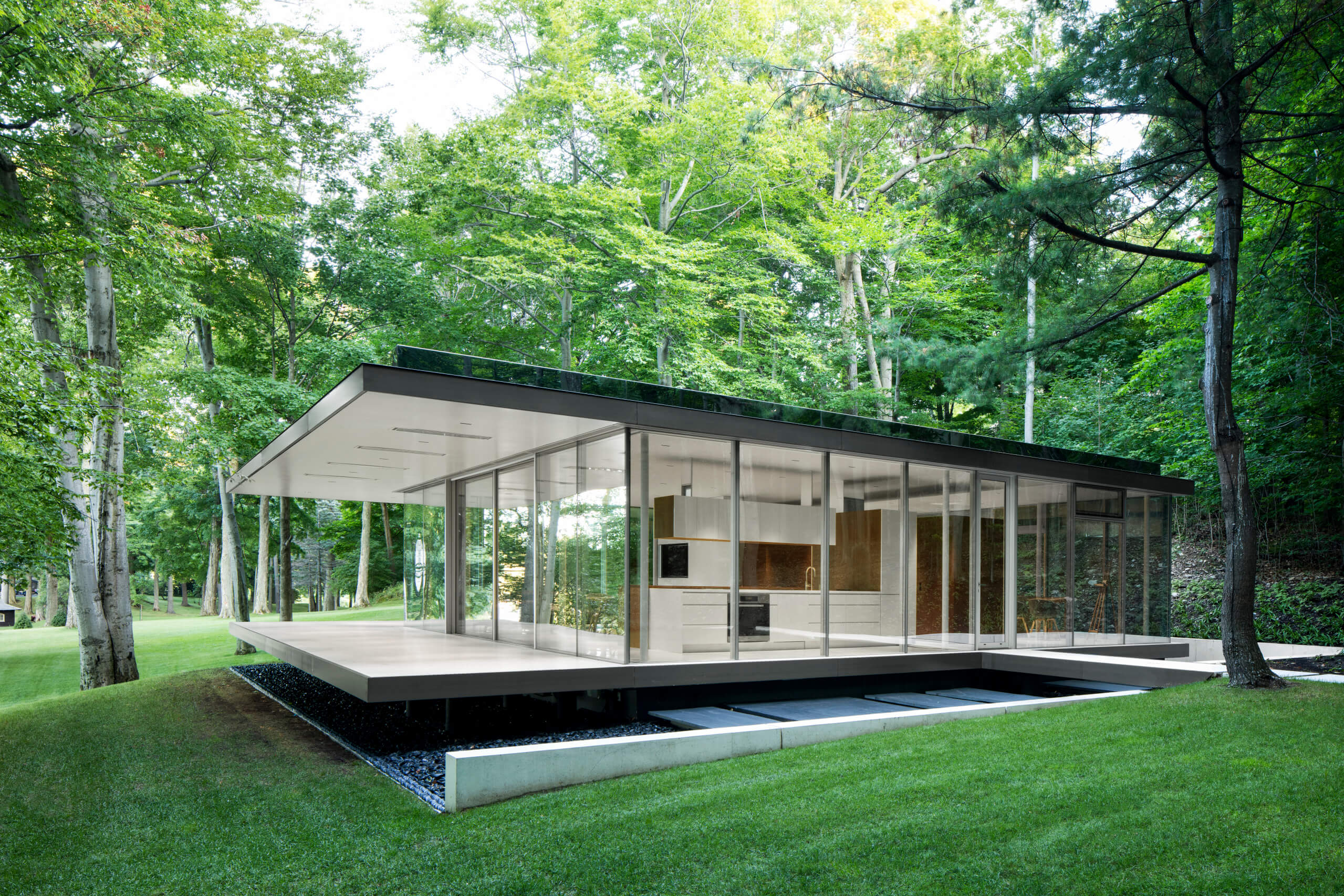
The completed pavilion is framed between floor and ceiling, both structures cantilevered out toward the water, highlighting the horizontality of the construction and magnifying the views of the lake and the forest. Reflective surfaces mirror the surrounding vegetation by day and become completely transparent at night. Every part of the pavilion is marked by precise detailing, from the clarity of the glazed exterior corners, to the expression of the floor and ceiling as single continuous planes.
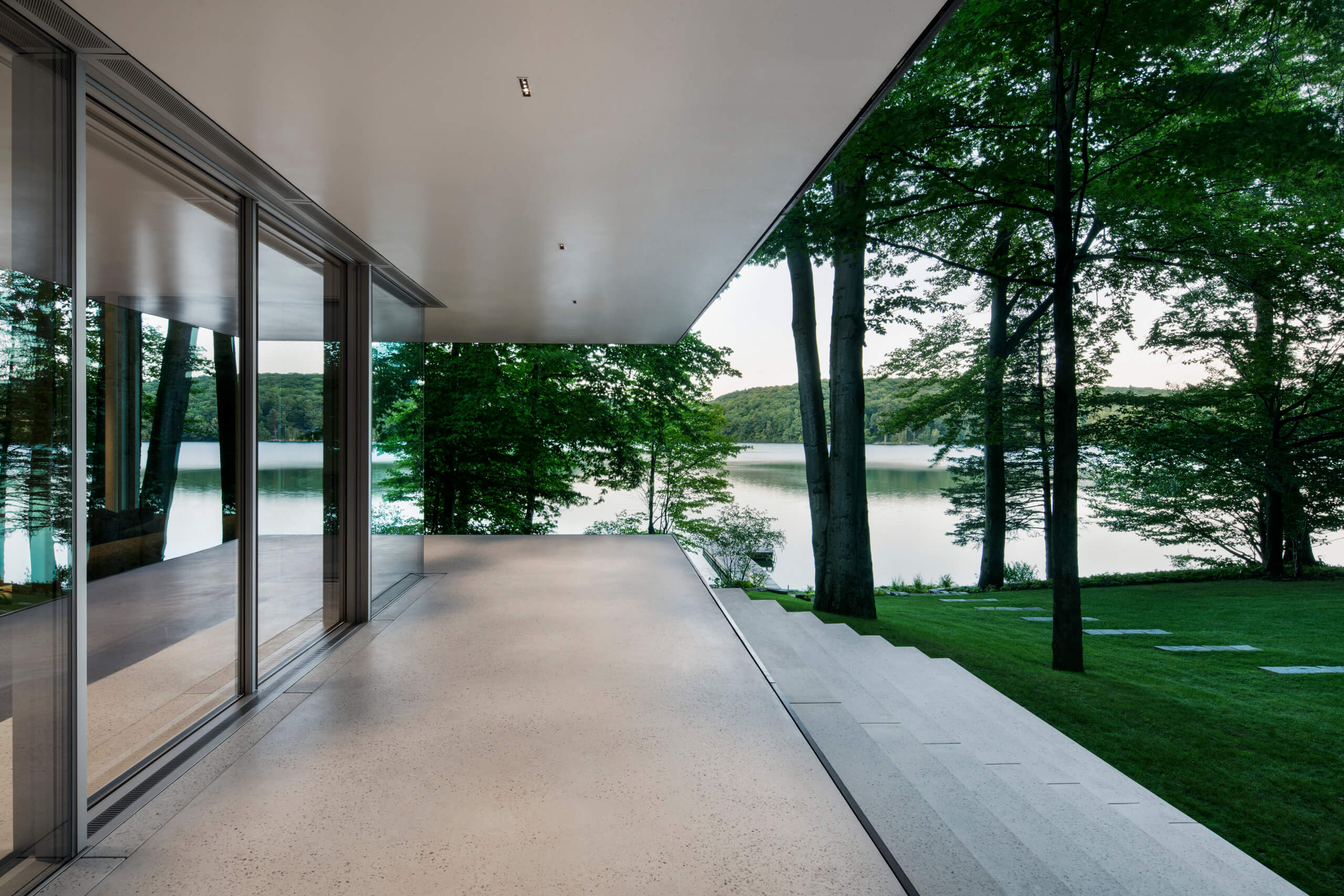
The restrained landscape treatment includes a low wall of white concrete at the north and east of the pavilion with large slabs of slate on the ground to accommodate changes in grade. An elevated walkway allows access to the main entrance from the road, and a large but seemingly weightless staircase provides a route to descend from the terrace toward the lake.
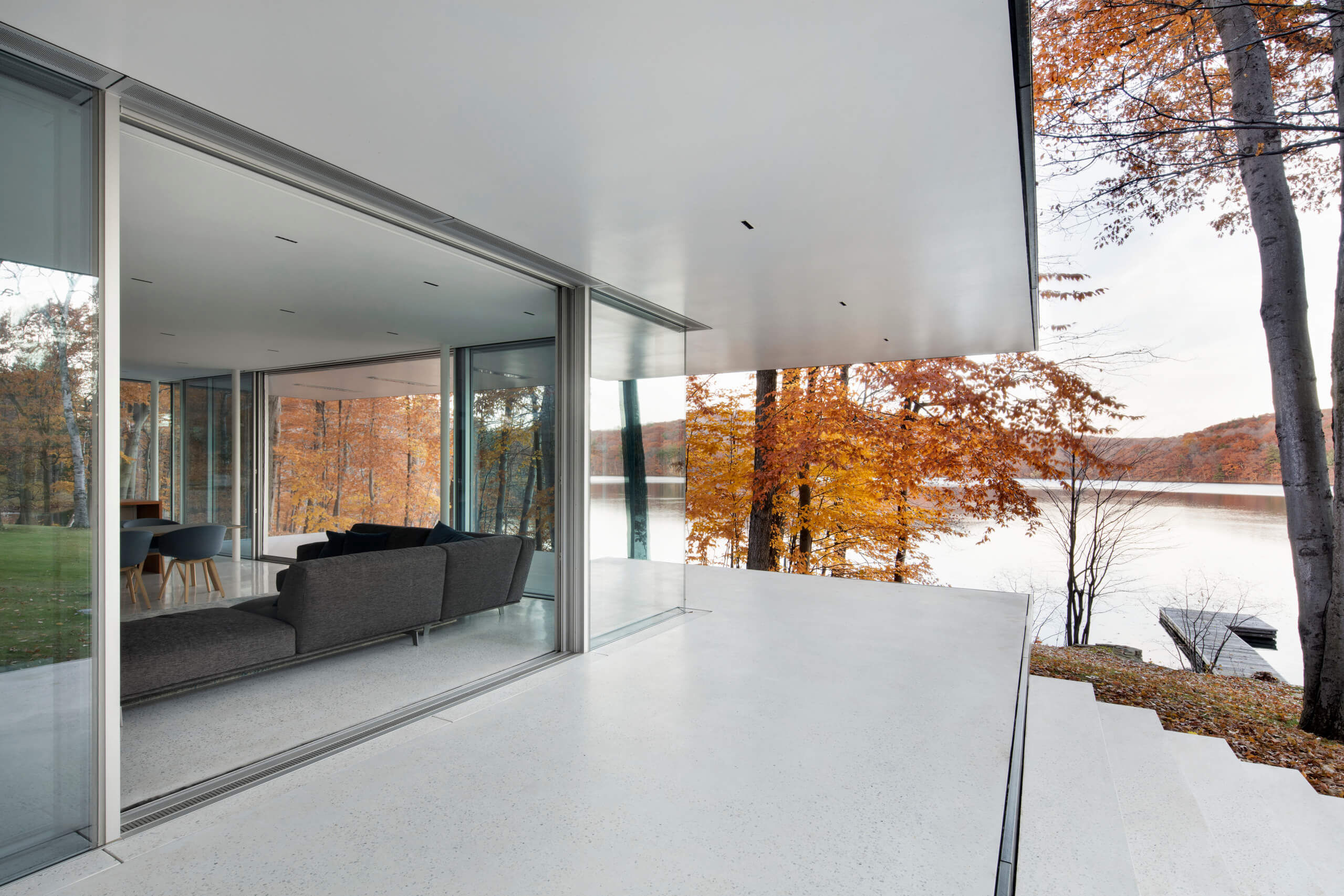
Lightness pervades every element of the design. The all-steel structure that supports the roof consists of round columns chosen to minimize their visual presence. At night, the polished concrete floor surface reflects light back up to the ceiling, emphasizing the weightlessness of the roof. All mechanical and plumbing services are concealed within custom millwork that forms a pure wooden volume that also serves to separate the public and private spaces. This service block, covered on all sides with teak wood, is separated from the exterior envelope and from the ceiling, so that the roof appears to float continuously above the interior spaces without interruption.
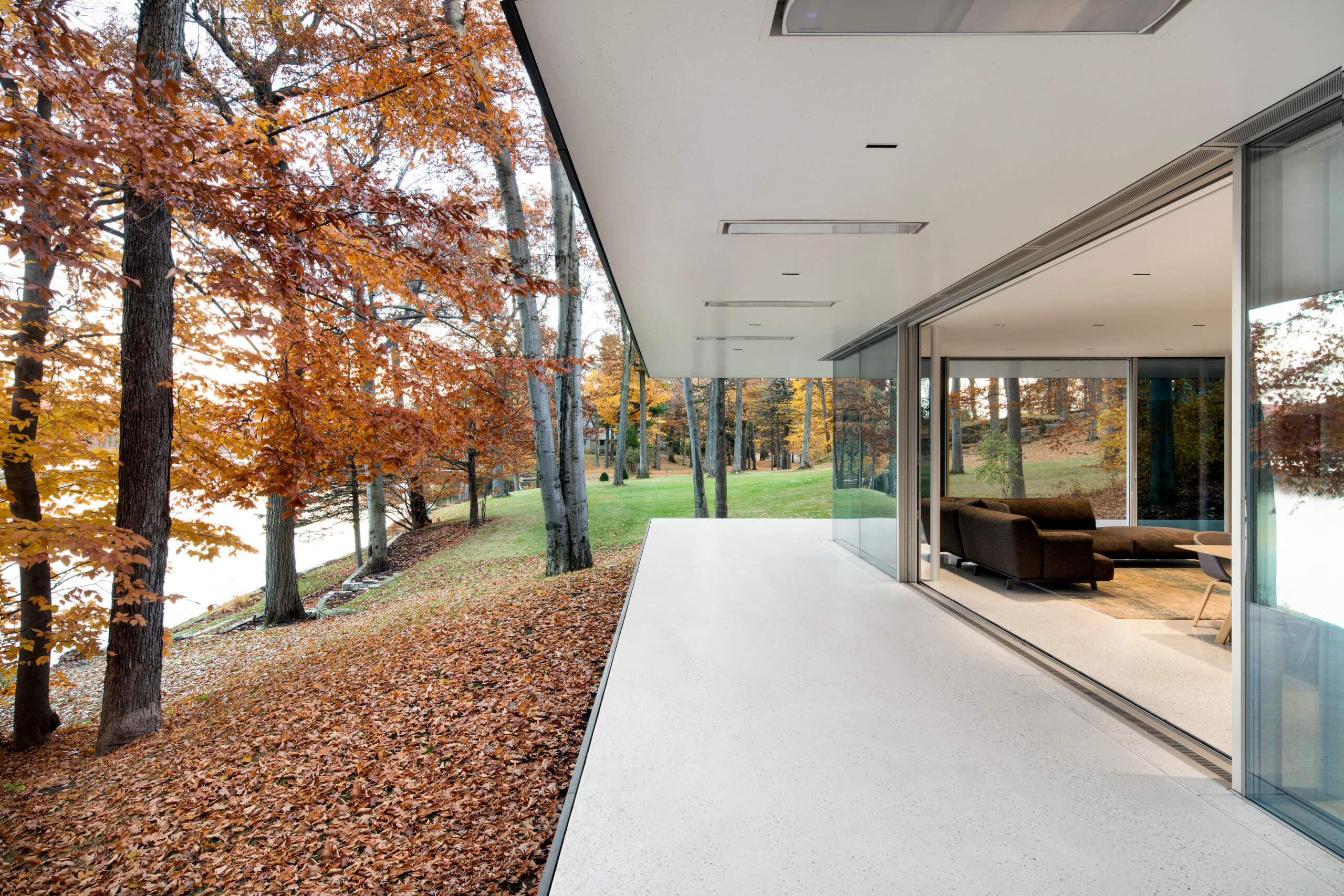
Sustainability was fundamental to the project. The high-performance envelope includes sliding, triple-paned glazing, with motorized shades and screens to reduce energy consumption in the challenging Quebec climate and to allow for passive ventilation in the warmer months. Electrical and mechanical systems, including radiant concrete flooring that serves as thermal mass to regulate temperatures, were managed by a home automation system to maximize efficiency. The natural features of the site were left untouched, and new landscape components were carefully selected to minimize their impact – the flat roof was planted with the same native species found throughout the property.
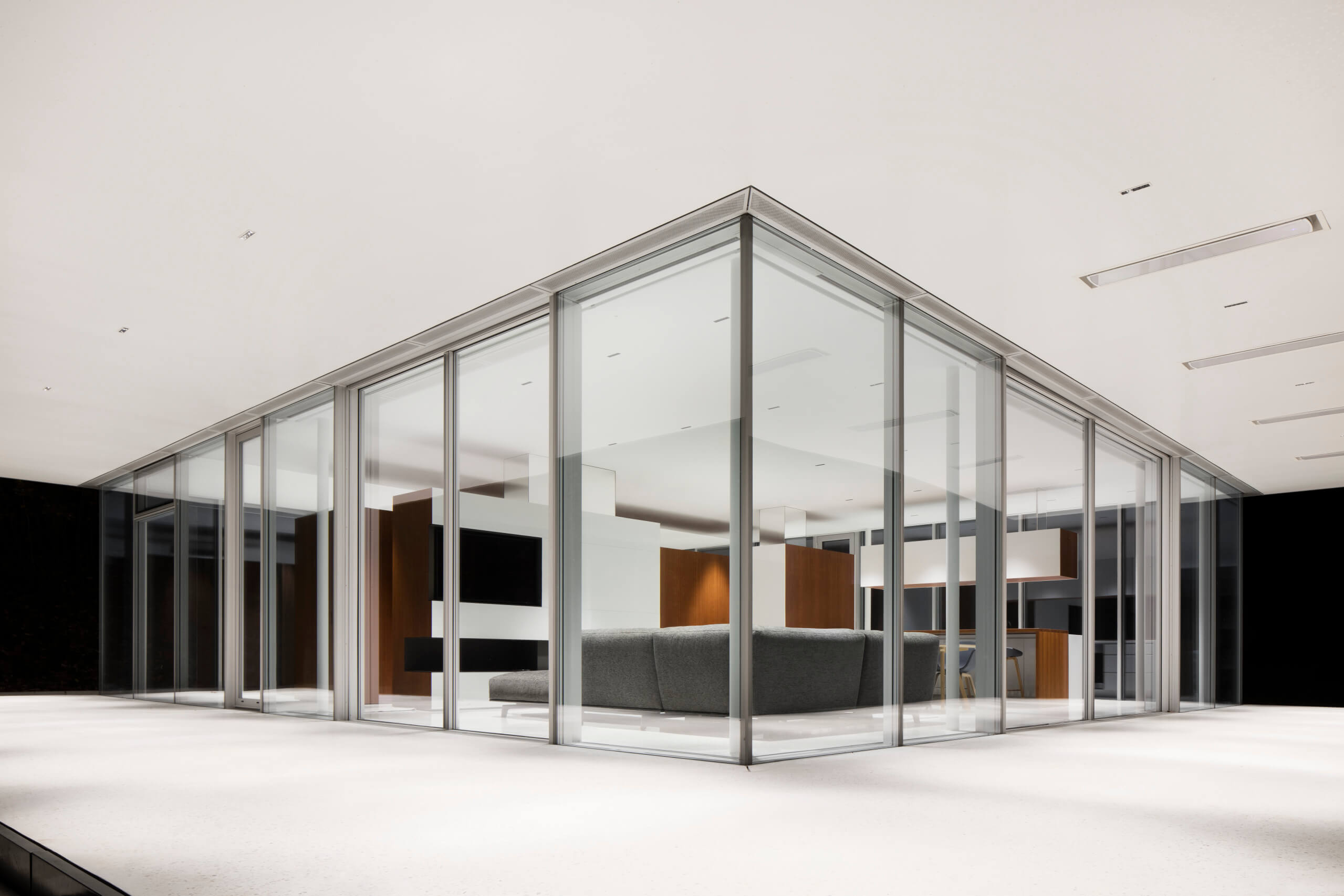
The client, an architect herself, wanted to create a signature structure to host guests within what was already a magnificent environment. Through meaningful collaboration, an innovative solution was found to meet the stringent project requirements, creating a singular piece of architecture that still allows this incredible setting to speak for itself.